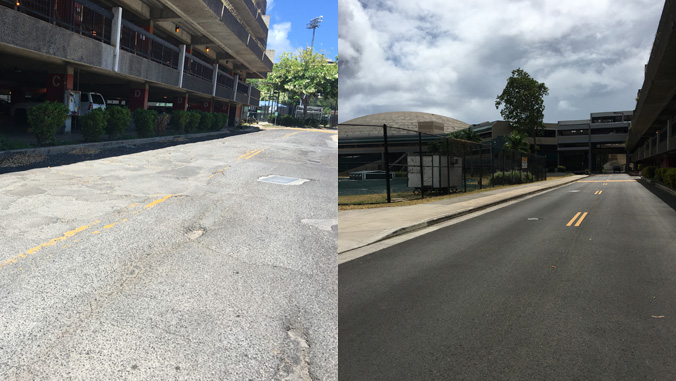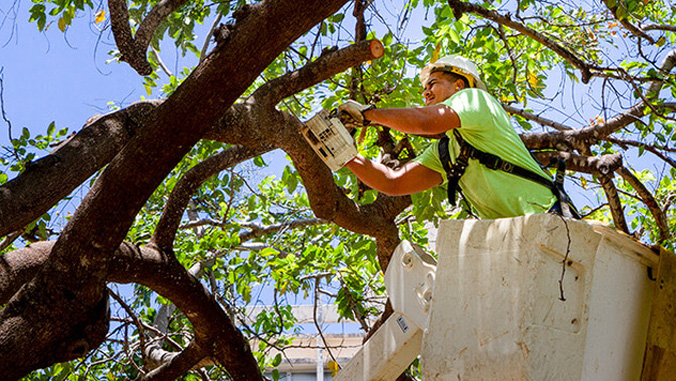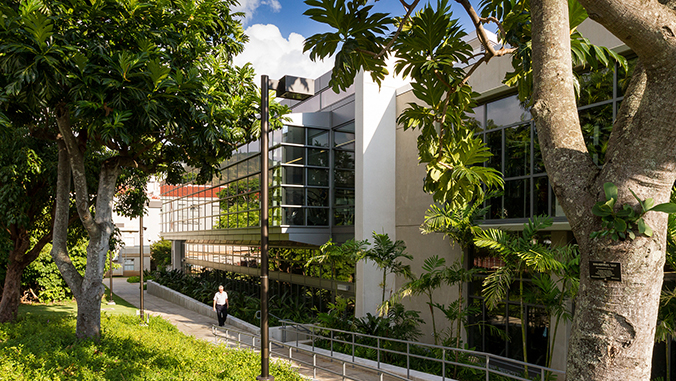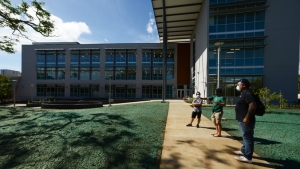
When the COVID-19 pandemic closed the University of Hawaiʻi at Mānoa, multiple units went into overdrive and took advantage of the empty campus to get ahead on basic maintenance and projects, big and small. The UH Mānoa Office of Campus Operations and Facilities, the UH Mānoa Student Life and Development, which manages the Campus Center Complex, and the UH Office of Project Delivery all made the most of the empty buildings and grounds.
The most noticeable example may be the completion of the repaving project on lower campus where athletics and most of student housing is located. Originally scheduled to start in the summer, the project came in under budget and ahead of schedule as approximately 290,000 square feet (6.5 acres) of roadways and parking lots were resurfaced and improved.
Another 300,000 square feet (7.0 acres) of roadway and parking lots work on the Upper Main Campus has begun and hopes to be completed by October 2020.
More than 20 other construction projects on campus, from the Life Sciences Building to generator upgrades, were able to continue uninterrupted. In some cases, projects like the fire alarm replacements at Miller and Everly Halls and UH Community College Offices on Dole Street, were able to finish ahead of schedule. The design-build project for Bachman Hall renovations proceeded and was recently awarded.

UH Mānoa’s tree maintenance crew was able to trim 30 percent more trees with the reduction in pedestrian and vehicular traffic as well as the restriction on noise during school hours, which was no longer in effect during the campus closure.

The building services crew were able to increase floor care—stripping and waxing—threefold in public areas such as hallways and corridors. Crews were also able to pressure wash exterior entrances and courtyards at Hawaiʻi Hall, the historic quad between Hawaiʻi Hall and the School of Architecture and the College of Education.
Repairs were made to the air conditioning cooling towers and chillers that serve the Campus Center Complex—Campus Center, Hemingway Hall and the Warrior Recreation Center—which would have been an inconvenience for all of its users had school been in typical session.
The entire complex underwent a deep cleaning including the meeting rooms, hard to reach areas and the courtyard, where the benches were re-finished by the maintenance staff. The Warrior Recreation Center was able to thoroughly inspect more than 100 pieces of fitness and cardio equipment with repairs being made, where needed.




